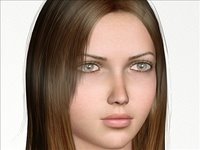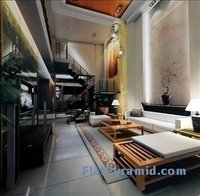The Many Features Of Rendering
Within the rendering process of a 3D model, how are these models brought to life through the process of animation and then created through photo realistic techniques to become characters in the films and games that we, as consumers, have become familiar with? Through the powerful process of rendering, we can create characters, ready for film, that encompasses lifelike qualities – and here are the features that assist artists through this process.
 The main qualities of rendering include: shading, texture and bump mapping, fogging, shadows, soft-shadows, reflection, transparency, refraction and reflection, depth of field, motion blur as well as non-photorealistic rendering. Although these techniques may seem confusing, once an artist has become familiar with photorealistic techniques and 3D rendering software programs, they will come to realize that it takes many of these features combined to create a successfully rendered 3D model.
The main qualities of rendering include: shading, texture and bump mapping, fogging, shadows, soft-shadows, reflection, transparency, refraction and reflection, depth of field, motion blur as well as non-photorealistic rendering. Although these techniques may seem confusing, once an artist has become familiar with photorealistic techniques and 3D rendering software programs, they will come to realize that it takes many of these features combined to create a successfully rendered 3D model.
Shading is an important part of a rendered model, as it gives light within the color and creates the appearance of shadows on a model, creating a lifelike appearance. It determines how the color and brightness of the surface of the model will interact with the lighting within the scene.
Texture and bump mapping give distinctive properties to the surface of the model and can create textures such as cloth, skin, or even liquid. Texture mapping is applied to surfaces on a large scale, and bump mapping to a much smaller scale, even as small as a pixel.
 Fogging and shadows are both ways of playing with the light in a scene, and how it will interact with the 3D model. Fogging will create a dimming effect of the light through the atmosphere, and can create intense low-light features.
Fogging and shadows are both ways of playing with the light in a scene, and how it will interact with the 3D model. Fogging will create a dimming effect of the light through the atmosphere, and can create intense low-light features.
Inserting a reflection into an object allows the surface to appear mirrored, such as a surface of a window, piece of glass, or even something shiny within the scene. Transparency and translucency, all determine how light and other objects will pass through certain parts within the scene. This is also important in the creation of windows, and glass.
Determining the depth of field within the scene of a 3D model means that an object such as the character will be in motion, and aspects or scenery in the background may appear to blur. Motion blur has the same effect when high speed or motion of the camera is simulated within the rendering programs.
Objects within the scene can be changed to appear as if they have been created manually, through the use of painting or drawing. These are referred to as non-photorealistic features, as they are drastically different from the features which are most often used.
Using these effects in conjunction with each allow scenes to be set that are realistic, believable or whimsical, depending on the degree to which feature is used.

